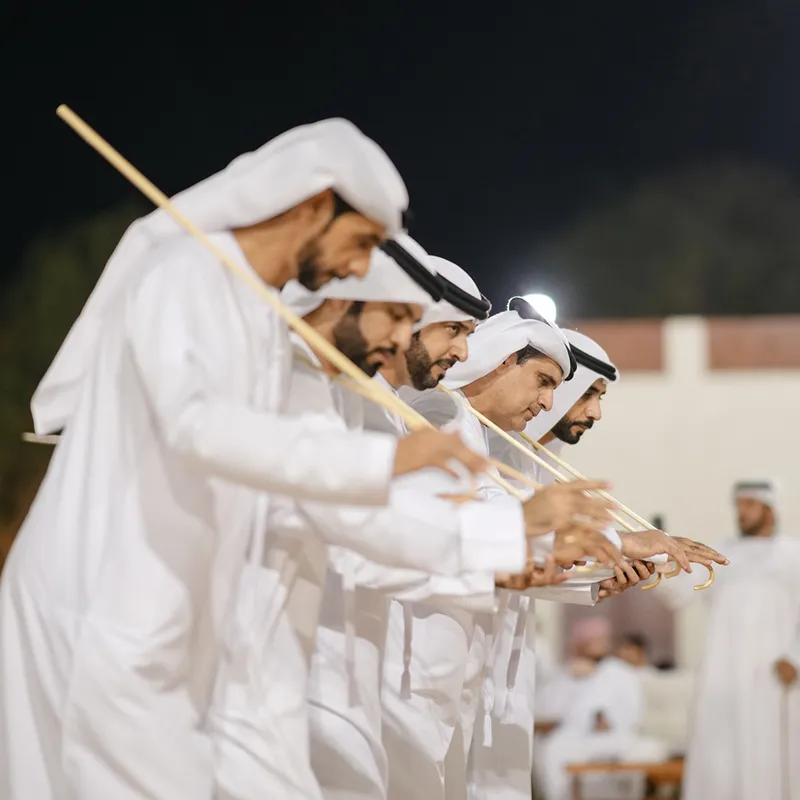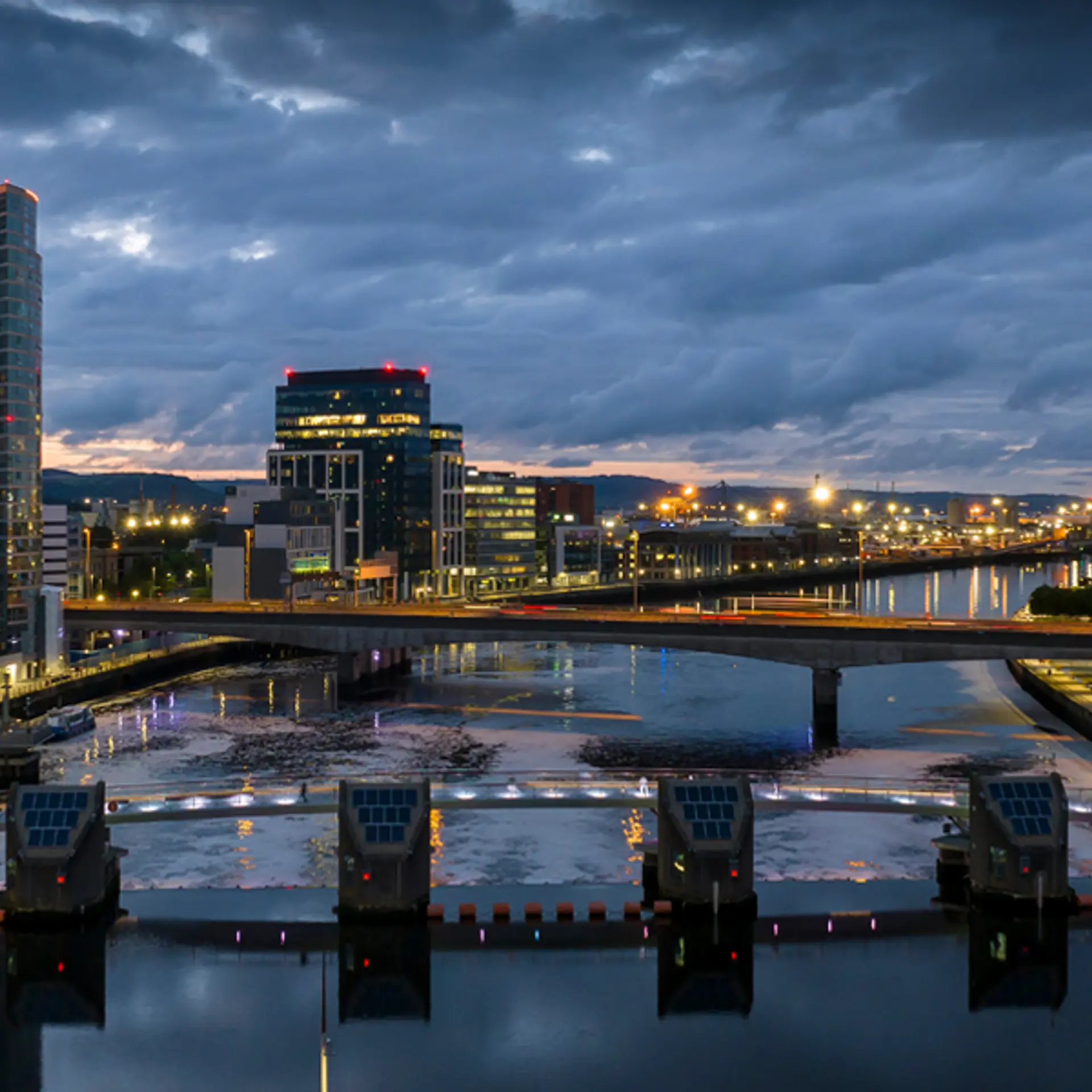Unbound by time: Abu Dhabi lives in the past, present, and future—all at once
Abu Dhabi promises both luxury stays and a rich, immersive experience in the history and culture of the Emirate. Its natural landscapes come as a surprise to travellers who expect to see only skyscrapers and malls.
It’s close to midnight, and I wonder if going stargazing in the middle of a desert, especially after a tiring day, is a good idea.
But there is no turning back now. We are in a 4X4 on our way to Al Quaa Milky Way Spot—about 170 kilometres from Al Ain—where we spent the evening taking in the Emirati culture and heritage.
“We might not see any stars tonight,” informs our guide, “It’s a matter of luck at this time of the year.”
“Perfect,” I thought, hoping I was back at the hotel.
We finally reach our destination after another long hour on a deserted road. Surprisingly, the place is teeming with tourists as we drive on to look for a darker spot. I can see lights—perhaps bonfires—at a distance, and people are chatting loudly, preparing for camp.
We almost tumble out of the vehicle as we look at the sky. There they are, against the odds, stars—hundreds of them.
“Now we walk,” our guide commands, as he hurriedly approaches the dunes to get away from the road and the headlights. We can barely control our excitement as we navigate the dunes, hoping our wobbly feet don’t give away and send us barrelling down.
He uses an ultraviolet flashlight to check if our path is safe. “No scorpions here,” he reassures us.
We don’t feel assured.
We finally sit on the edge of a dune, which is as mesmerising as the stars above. I can’t seem to take my eyes off the surroundings–and of course, worrying about scorpions. Dry shrubs scattered around feel eerily like people—perhaps long-gone travellers—crouching behind us.
Even as our eyes adjust to the darkness and we spot more stars and planets, our guide reminds us that it’s time to leave. We protest, wondering if we can stay until dawn to watch the sunrise.
Far from the city lights, the Al Quaa Desert offers some of the darkest skies in the UAE for stargazing. The best time to visit the spot is around the new moon phases. But even if you are on an unplanned trip to the Emirate, a trip to the desert at night is an experience you don’t want to miss.
Abu Dhabi: Beyond time
Abu Dhabi, the capital and largest of the seven Emirates of the UAE, is also the country’s political and cultural hub. It is also among the most popular travel destinations for Indian tourists.
India is the largest market for the national carrier Etihad Airways in terms of inbound passengers to the country, according to Arik De, Chief Revenue and Commercial Officer of Etihad Airways.
“We operate 181 flights per week to India, and this year, we’ll carry nearly 3.5 million passengers from India to Abu Dhabi and beyond,” he says in an emailed statement.
And, while I expected to see skyscrapers and large malls during my five-day visit, I wasn’t ready for its natural landscapes and cultural heritage.
Abu Dhabi holds on to its past and traditional way of life even as it builds for the future. Take, for example, Qasr Al-Hosn—one of Abu Dhabi’s oldest buildings that stands like a time capsule between glitzy skyscrapers. Or, the Louvre Abu Dhabi—a museum that looks straight out of a sci-fi movie.
Then there is Al Ain, the garden city of the Gulf, preserving the region’s rich historical heritage.
A foodie’s guide to Abu Dhabi: Where to go for great food and warm conversations
An oasis of wonders
At the Traditional Handicraft Festival at Souq Al Qattara late last year, I met artists who are part of the Abu Dhabi Register of Artisans—an initiative by the Department of Culture and Tourism.
The event was held at Al Ain, which sits on the border of Oman and has archaeological sites dating back to 4,500 BC. Popular among them are the underground water channels or the "falaj system", some of which are thousands of years old.
Besides quick history lessons, the festival offered much to see and do. It all felt quite familiar and, somehow, also different. For example, I saw artists weaving baskets, a craft I have seen multiple times before, but the patterns—Sadu and Talli, a type of decorative braids—were unique.

A woman at the Handcrafts Festival in Al Ain applying henna
I also met Quraizah Burqa’a, artists who sew burqa’as—a type of mask worn by Emirati women. Traditionally, the fabric used to make these masks was imported from India.
Abu Dhabi also has local coffee championships, where participants are judged on several parameters, including roasting, grinding, boiling, the etiquette of serving the coffee and, of course, the final taste.
We met some of these participants at the festival and were treated to some Emirati coffee. We also received lessons in the etiquette of drinking coffee the Emirati way—always accept the cup of coffee from the host with your right hand, and that it is customary to drink at least one cup of coffee.
“In Al Ain, I believe there is a big opportunity for the community to interact in a different way. It is not a touristic experience only. No, it is way deeper, with a deep dive into the history of Al Ain,” a spokesperson said during a media interaction.

Woman and children at the Handicrafts Festival in Al Ain. Image courtesy DCT
The atmosphere at Al Ain was lively and inviting. Despite being among the few non-locals, I didn’t feel like an outsider.
Other spots to explore while in Al Ain include Jebel Hafeet, which at over 1,200 metres, offers panoramic views of the city; Qasr Al Muwaiji, a historical fort; Hili Archaeological Park, a UNESCO heritage site, and the Al Ain Oasis.
Qasr-al-Hosn and Louvre Abu Dhabi
Exploring Qasr-al-Hosn, Abu Dhabi’s oldest and most significant building, feels like travelling back in time. The museum in its compound charts the city’s journey: from a settlement reliant on fishing and pearl trade in the 18th century to a modern metropolis.
The immersive audio systems were both incredible and eerie. It took me a hot minute to realise the “kitchen sounds” that I kept hearing in one of the rooms weren’t real, but were coming from an audio playback!
Then there were sounds of people speaking, announcements on the radio, and telephones ringing that made the palace more lifelike.

Men perform a traditional dance called Al Ayyala at the Handicrafts Festival in Al Ain. Image courtesy DCT
Louvre Abu Dhabi on the Saadiyat Island offers a different kind of time-warping experience. For starters, the museum building–with its white walls and a massive dome that seems to be hovering above–looks like a place of the future.
Going from one room to another in the museum, I could sense the subtle shift in lighting and even floors, which added to an immersive experience. The many writings on windows are also arranged in a way that invokes introspection.
Pro tip: Although not quite as big as the Louvre in Paris, the museum in Abu Dhabi is huge. Schedule at least half a day to explore, and wear your comfiest shoes because there is a lot of walking!
The futuristic Yas Island
The 30-minute-or-so car ride from downtown Abu Dhabi to Yas Island felt like seeing a city in transition. Massive projects dot the roads as large billboards in vast barren lands promise unparalleled luxury.
From Warner Bros. World and Ferrari World to the National Aquarium and Seaworld—Yas Island offers a variety of fun activities for all ages. Be prepared for a lot of walking and waiting in queues!
There is endless shopping that one can do in and around Yas Island, as well as downtown Abu Dhabi. As a solo woman traveller and as a person who gets overwhelmed by crowds, loud noise, and bright lights, I found the prayer rooms at these parks and shopping centres a welcome retreat. At any time of the day, I could slip away for a few minutes to catch up on my breath and, of course, pray.
Speaking of travelling as a woman, Abu Dhabi felt incredibly safe, and I didn’t feel the need to look over my shoulder at any point. However, the cultural aspect of some men remaining guarded in their interaction with women travellers could come across as a bit unsettling.
A car-dependent city, Abu Dhabi offers few options for those who love to explore on foot. One such place is the eight-kilometre-long Abu Dhabi Corniche, which offers some spectacular views and an opportunity to relax.
With many popular tourist destinations crowded and “Instagrammed” to death, Abu Dhabi offers that rare mix of a few not-so-well-known natural and cultural sites and a laidback lifestyle that allows one to indulge in slow, luxury travel.
The author was in Abu Dhabi at the invitation of the Department of Culture and Tourism, Abu Dhabi.
Edited by Suman Singh







